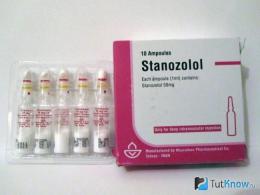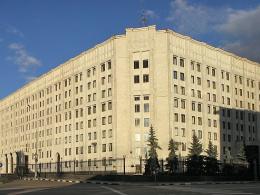Using the easybcd 2.3 program. Backing up data using ExilandBackup Free
Hello admin! The question is this. How to restore Windows 7 boot after installing Windows XP without using EasyBCD 2.3? The whole backstory is like this. I installed Windows 7 on my computer and did not know grief until I purchased a used BENQ 7400UT scanner with a slide module for photographic films, but it turned out that the scanner only works with Windows XP, and there are no drivers for Windows 7. I had to install Windows XP as a second system on the computer and naturally, after installation, only XP began to load. On the Internet they advised to install a download manager program EasyBCD 2.3 , but they warned that this program does not always work normally.Question. How do I restore Windows 7 boot after installing Windows XP without using the program?
How to restore Windows 7 boot after installing Windows XP without using EasyBCD 2.3
Hello friends! I would like to say that this problem with beards is already on our website, where Vladimir explained the reasons for its occurrence. The fact is that Windows XP, after its installation, writes toactive hard disk partition PBR (Partition Boot Record)code pointing to its NTLDR bootloader. After this, only Windows XP boots on the computer. However, it is very simple to restore Windows 7 boot, all the details are further in the article.
I suggest using a very unique and simple utility - Bootice, which is not a boot manager, is a very intuitive tool for managing the MBR and PBR master boot record of your hard drive, it can also edit the BCD boot configuration data store file, and much more. But most importantly, Bootice can clearly show the average user what exactly happened to his computer after installing Windows XP as a second system and why Windows 7 stopped loading.
So, we have a computer with Windows 7 installed.
Let's create a second partition on the hard drive (E:) and install Windows XP on it; the installation process itself is described in this section and we will not dwell on it in detail.

After installing Windows XP, only one XP will boot on the computer.

Go to Disk Management in Windows XP. Windows 7 is on the (D:) partition and Windows XP is on the (E:) partition. You can also notice that a hidden partition (size 100 MB) (Reserved by the system) with the boot storage configuration files (BCD) and the boot manager file bootmgr has become visible, it is assigned the letter (C:). Windows XP copied its bootloader (files boot.ini, ntldr and ntdetect.com) to this active partition.


For further work, enable the display of hidden files and folders in the system.
Service->Folder properties.

Uncheck the following items:
Hide extensions for registered file types.
We mark the point:
Show hidden files and folders.
Apply and OK.

Download and run the utility Bootice.

In the main program window, select your hard drive (if you have several), then click"PBR Processing"

Note : As I already noted at the beginning of the article, Windows XP, after its installation, writes code pointing to its NTLDR bootloader to the active PBR (Partition Boot Record) partition of the hard drive. After this, only Windows XP boots on the computer. We need to change the boot entry to codeBOOTMGR, which is used by the Windows 7 operating system.

Check the “BOOTMGR Boot Record” item and click on the “Installation/Configuration” button, after which Windows 7 will boot on our computer.



"Close"

At this stage, we need to update the Windows 7 boot storage (BCD) configuration with information about Windows XP located on the (E:) partition.
Click on the BCD button and check the box “Another BCD file”, then click on the Explorer button.

In the explorer that opens, go to the drive (C:) hidden partition (size 500 MB) System Reserved

and find on it, in the Boot folder, the boot storage configuration file (BCD), select it with the left mouse and click Open.

"Easy Mode"

Click on the “Add” button and select the “Windows XP/2003” entry

Select our hard drive.
Select the partition (E:) with Windows XP installed and click on the “Save settings” button


"Close"


Thus, we added information about Windows XP located on the partition (E:) to the boot storage (BCD) configuration of Windows 7.
Reboot

and we see a menu with the ability to select to boot any of the installed operating systems: Win 7 and Win XP.

Note: If you choose to boot Windows XP, then in rare exceptions you may receive an error:
Windows failed to start...
File:\NTLDR
Status: 0x000000f
Status: The selected entry cannot be loaded because the application is missing or corrupted.

In this case, go to the System Reserved section (size 100 MB) and copy the NTLDR file on it,

paste it onto the partition with Windows XP installed.

The operating system should boot.
The last month has been fruitful for new versions of operating systems: first, Microsoft showed us a preliminary version, and most recently the planned release of Ubuntu 11.10 was released. I am sure that many of our readers did not deny themselves the pleasure of trying these new products, and as a result, they ended up with several operating systems installed on their hard drive. Therefore, it’s time to get acquainted with a simple and convenient program that will help bring order to the Windows boot menu.
EasyBCD is a free program for non-commercial use that is used to configure the boot of operating systems. The program runs on Windows Vista/Windows 7 and can change OS boot options, as well as add the ability to boot other OSes, such as earlier versions of Windows or MS-DOS, Linux, BSD and even Mac OS X.

The program interface consists of one window; switching between functions occurs using the buttons in the left panel. Button View Settings will show existing Windows boot menu items. On the tab Edit Boot Menu you can edit the name of the OS, the order in which they are displayed, select the default system, remove unnecessary ones and change some other options.

To add new operating systems to the boot menu, use the tab Add New Entry. Please note that you can add either an OS already installed on your hard drive, or an ISO, WinPE, or even a floppy drive image.
On the tab BCD Backup/Repair we can backup or restore the Windows bootloader, which may be useful to us in case of unexpected problems. Please also pay attention to the section BCD Deployment in which you can create a bootable USB or external drive, as well as install the bootloader in the MBR.
EasyBCD is a powerful, unparalleled free tool for managing the Windows 7/Vista boot menu. With its help, you can quickly and conveniently organize the boot of several systems, change bootloader options, and use it as a recovery tool and problem solver. At the same time, you should always keep in mind that thoughtless use of such programs can lead to unpredictable consequences. Therefore, we recommend that you first study
Many users use two or more operating systems simultaneously on one computer. We will consider the special case when Windows XP and Windows 7 (or Vista) are installed. As a rule, after installing the second Windows on the computer, the autoloader of the last installed system works. To correct this situation and be able to select the operating system to boot, you can use the console utility bcedit, launched from the command line. But this option will not be convenient and understandable for everyone, since it will require studying the keys and parameters. We will look at the EasyBCD utility developed by NeoSmart Technologies. This program is designed in the usual window form and has a user interface.
If an error message appears after installing and launching EasyBCD, manually indicate to the program the folder where the profile file is stored, by default this is C:\Program Files\NeoSmart Technologies\EasyBCD\profiles\
Further actions depend on the order in which the operating systems were installed. If XP was installed after Windows 7 (or Vista), and it is this system that starts automatically after turning on the computer, then install EasyBCD in Windows XP and select the partition Bootloader Setup and option Install the Windows Vista/7 bootloader to the MBR. After that, press the button
and reboot the system.
Thus, we restored the bootloader of the seventh version of Windows (or Vista). An alternative option involves using the installation disk of the specified OS, and selecting the item in the menu Startup recovery.
So, after restoring the bootloader and rebooting, we are automatically taken to Windows 7 (or Vista). Now install EasyBCD on this operating system and continue with the settings. After launching the utility, click the button and we see one entry in the list indicating that it is loaded by default Microsoft Windows 7.

Now press the button and add a new entry to the loader. Open the Windows tab, then select the Windows version NT/2k/XP/2k3 from the list, and in the field Name enter the text that will be displayed in the list of bootloader operating systems. By default, for the selected OS version it will be entered Microsoft Windows XP. Then press the button .

Let's go back to the loader list ( Edit Boot Menu) and find that a new one has been added to the previous record. The checkbox in the Default column indicates which operating system will boot by default. Here you can configure the time during which the OS list will be displayed. After completing all settings, press the button .

After configuring and changing Windows boot loader settings, after turning on the computer or rebooting the system, a screen appears with a list of operating systems:

Characteristics:
Interface language: English
OS: Windows XP, Vista, 7, Ubuntu, OS X, etc.
File size: 1.3 MB
License: free
Most of the instructions for creating bootable media assume that the user has an ISO image, however, in some cases this is not the case. It happens that instead of an image, the user has the installation disk itself or simply all the necessary files copied to one directory. In this case, you can also create an image from all this, and only then write it to media, but you can do it differently by using the instructions for using the EasyBCD utility, which can be downloaded from the link https://neosmart.net/EasyBCD/.
Download and Install
After downloading, you will need to run the executable file and install the program, there is nothing unusual here, just a wizard to install new applications. After launching, you can launch the program, as you can see from the menu, it has many capabilities, and creating a bootable flash drive that the user needs is just one of the additional functions. During installation you will be able to select Russian language, don’t miss this moment and just press further on all points.
In general, the program is designed for operating systems. It allows you to customize the boot, load multiple OSes, and this is not the entire list of possibilities, however, at the moment another option is interesting.
How to use the program
For example, if the user has several operating systems that are located on different partitions, it will be possible to create a multi-booter and manage them. To do this, in one of the systems you will need run the program. The first OS will be immediately detected and displayed in the utility. 
To add a second OS, select Add New Entry, in which you will need to select the type of second OS. There are many points here that will help the user accurately determine and set the version of the second Windows. 
After this all you have to do is click on addentry and wait for the process to complete. Now you can see both systems in the settings and easily reboot into either of them.
You can also do this if not two Windows are installed, but, for example, Windows and Linux. 
You just need to select the appropriate item and provide all the necessary data. This can be done not only with two operating systems, but also with any other number of them, the main thing is not to forget to add them to the program as they are installed.
It is worth mentioning that the program can help the user run not only systems that are installed on different disks or partitions, you can also add systems from optical media or flash drives, which opens up a wide field for experimentation. 
The utility allows rename download points, so if the user has 2 identical systems installed, one for work, the other for games, he can name them accordingly so as not to be confused when choosing. One of the nice additions is that the program can restore boot sectors and make backups of them.
Creating a bootable USB flash drive
To begin with, with this method of creating a bootable drive, you will need to copy all existing files to a flash drive, no matter where the copying is made from, from a disk or from another folder. 
Now you will need to launch the program itself and select the item installationbcd, a window will open in front of the user in which he only needs to indicate the path to the drive on which all the necessary installation files are located. 
Once the required information has been specified, all you have to do is click on Installbcd.
When working on a computer, there is always a possibility of data loss. This may be caused by malware, user error, system failure, or hardware failure. By using your computer and software wisely, as well as using additional software to secure your computer, you can minimize the risk of losing information, but there is still no 100% guarantee. Therefore, to save your files, as well as your nerves, it is recommended to make backup copies. You can make copies yourself manually if the data is updated rarely and on media to which you do not have constant access (external drive or flash drive). Or backup data automatically on a schedule using special programs. I would like to introduce you to one of these programs. This is ExilandBackup.
Three versions of the program
The program has three versions:
· Free – free version of the program. It is quite functional, but it does not have an automatic launch according to a schedule.
· Standard - suitable for home use or backup in small companies.
· Professional - The most complete version, which is a full-fledged Windows service and is installed on one machine (usually on a server)
The cost of the program may vary depending on the number of licenses purchased. As of January 2016, the cost of the Standard version looks like this
Now let's move directly to the program.
Setting up folder backups to another computer
Our task is to set up a scheduled backup of data from some folders to another computer on the local network.
Click the “Create” button.
We come up with a name for our task and a brief description. This point is needed because there may be several tasks.
Specify the backup type: Full, Incremental, Differential or Synchronization. The description of each type of copying is presented in detail and intelligibly in Russian:
If you have decided on the type of copying, proceed to the next step: select the folders and files that should be copied.
File compression. Before files and folders are sent to backup storage, it is suggested that you archive them. This will reduce the amount of transferred data, simplify its transfer, since only one file will be transferred, and also makes it possible to set a password to ensure greater security of your data.
Next, we indicate the destination path, i.e. the place where copies of our data will be stored. This could be another computer drive or a directory on another computer located on the local network. In the latter case, specify the full path:
//computer name/folder/subfolder.
If access to these folders is limited, then enter the access data in the Login/Password field.
Pay attention to the “Backup naming template” field. The names of your backups will look something like this.
Schedule. The schedule allows you not to think about running backup tasks, since everything will happen automatically. Check the box next to "Run on schedule" and then indicate at what time and on what days the data will be backed up.
Attention! This function only works in Standard and Professional versions. In the free version, tasks can only be launched manually. SHAPE \* MERGEFORMAT
If desired, you can configure additional job properties. For example, what needs to be done upon completion of a task or edit already configured properties. Everything is intuitive and does not require separate explanations.
The created tasks will be displayed in the main program window:
Tasks for which a schedule is configured can be started manually, if necessary.
As a result of setting up several computers, I have several backup copies:
As you can see, everything works.
By the way, sometimes this helps a lot. Verified.






